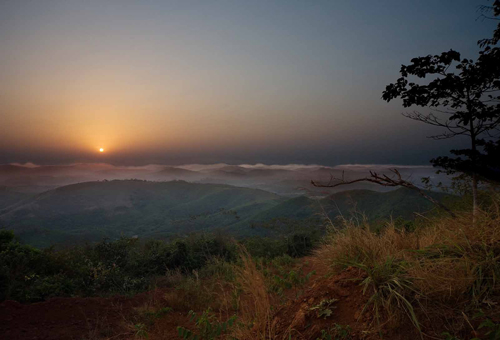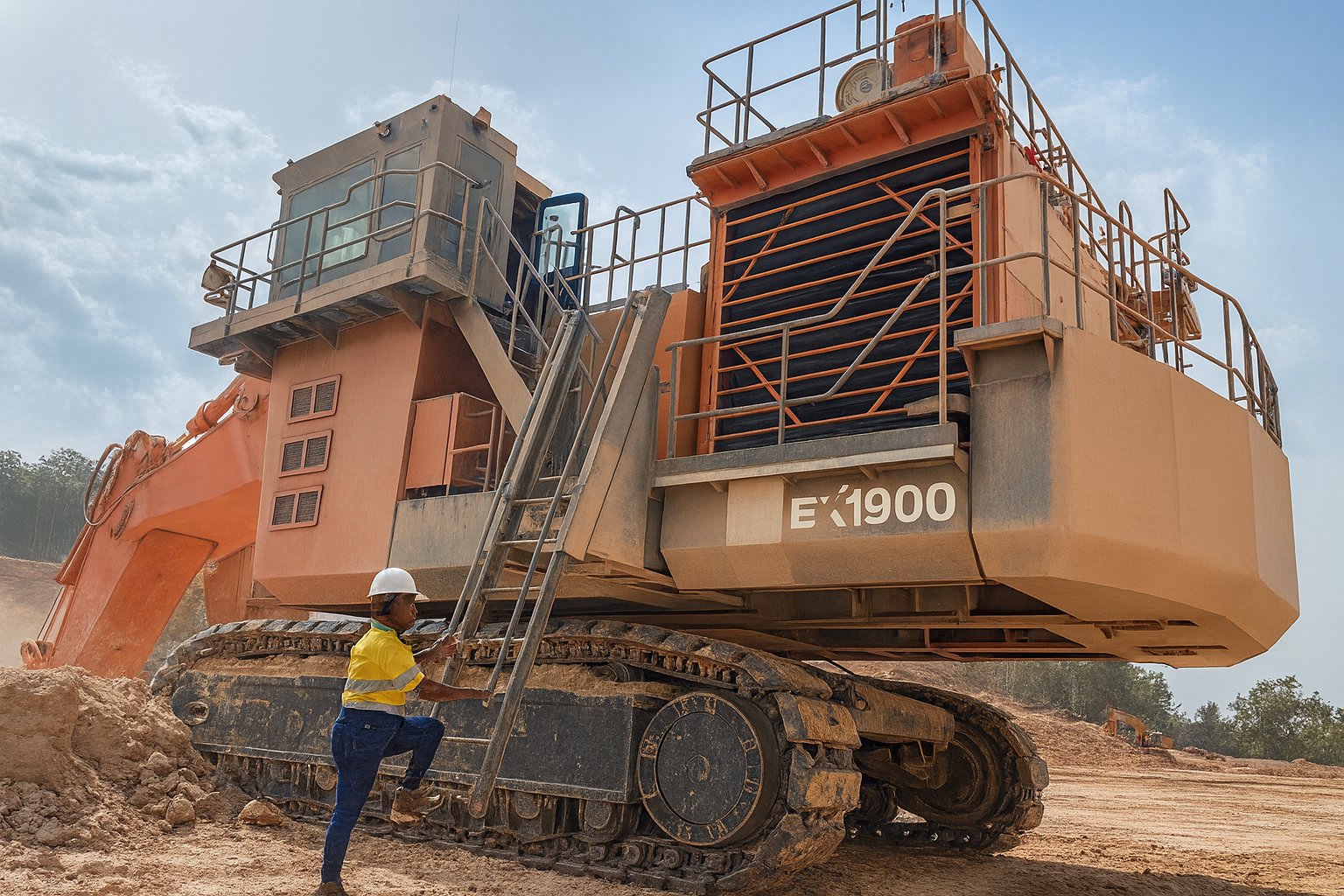
To say that 2013 was a good year for African Minerals is, in truth, something of a major understatement. While the company itself may be more modest about such things the reality is that this is the company that last year was responsible for completing Africa’s fastest major mine development. The mine in question is the Tonkolili iron ore mine in Sierra Leone, and the work of the company in 2013 saw this world class asset commence with the ramp up to 20Mtpa across its fully integrated, exclusive use 200 kilometre mine, rail, port and marine infrastructure network.
Active in Sierra Leone since 1996, African Minerals shifted from its initial search for alluvial diamonds to iron ore following the discovery of the Tonkolili deposit. Tonkolili today has a JORC compliant ore resource of 12.8 billion tonnes, which extends over a combined strike length of 30 kilometres, and includes a substantial Direct Shipping Ore and Saprolite mineral resource overlying one of the world’s largest magnetite ore bodies.
“The last 12-18 months has very much been characterised by the completion of construction of Phase I at Tonkolili and its subsequent de-risking,” states Mike Jones, Head of Corporate Development and Investor Relations. “We have also spent the last year making the operating parameters of the project more consistent in order to maintain the desired 20 Mtpa run rate.”
In total, 2013 saw the company produce approximately 13.1 Mt of saleable iron ore and export 12.1 Mt. These figures contributed towards African Minerals establishing itself as the largest contributor towards Sierra Leone’s GDP. “Sierra Leone has been heralded as being the country with the second fastest growing economy in the world in 2013, and as the biggest contributor towards GDP we have become an important feature in the country’s emergent industrial landscape,” Jones continues. “Likewise, with its stable environment, clear mining legislation, our strong relationship with the government and with our resource set where it is, the country is equally important to us. That creates a mutual respect and a joint purpose, driving a healthy symbiotic relationship between both parties.”
As 2013’s results show, the business model that African Minerals has established for itself, one that encapsulates the ethos of “don’t put off until tomorrow what you can do today” has proven hugely successful. “In order to get a perspective on how we put this model into practice you need only to look at the rapid development of the Tonkolili deposit throughout our time operating here,” Jones explains. “Initially we set up under the pretence of this being an eight million tonne per year partial road haulage operation. Over a relatively short space of time, during which we were developing the asset and securing mining and infrastructure licences, the whole approach evolved to make it a ten million tonnes on rail operation, then twelve, 15 and ultimately 20 million tonnes per year.”
As Jones goes on to highlight, such a large change in scope during the early stages of construction would have likely proven to be impossible had the company gone the natural route of getting a formal reserve developed, dipping into feasibility studies, securing external project financing and so forth. “By applying a large degree of flexibility when it comes to our financial arrangements and capital decision making, we have been able to significantly enhance and accelerate the completion of the expanded phase I project during its construction.”
Impressive as they are, African Minerals’ efforts have not solely been designed to benefit the company and its stakeholders alone. Rather it has always been its desire to ensure that everybody is a net winner from its activities, striving to create a better quality of life for the communities in and around where it operates, one that is sustainable long after the mine has ceased operating.
“One of the first benefits people tend to link to a successful operation like ours is direct employment, however it goes much further than that,” Jones says. “One can only employ a certain amount of people obviously, so we look closely at how our presence in the region can positively impact upon people up and down our footprint. In terms of indirect employment, increased activity in the area creates opportunities for the service sector and we also try to assist where we can in the drive in demand for goods and speciality services, including livestock, food and vegetables, carpentry, brick making and clothiers.”
The development of people within the community in order to give them a better chance in life is a driving force behind a number of African Minerals’ CSR efforts, one of which is the refurbishment and financing of the Magbaruka Technical College.
“One of the first things we noticed when we began operating in Sierra Leone was the fact that, as a result of the devastating Civil War that latest from 1992 to 2002, there was a significant dearth of men and women in the 20-30 year old age group, the group that would typically include your semi-skilled artisans and tradespeople,” Jones highlights. “Our response to this is to utilise the college in order to provide national, vocational training in various semi-skilled and skilled trades. In completing this training these men and women will become certified both nationally and regionally, and while of course we would love it if they all one day worked for us, the most important thing is that they leave the college as a mobile asset capable of earning a living either within Sierra Leona or the wider region.”
At the time of writing figures released by the company shows the first quarter of 2014 coming along encouragingly, with the fully integrated mine, plant, rail, port and marine operation contributing towards the production of 5.3 Mt of saleable product and the export of 4.6 Mt in the quarter, making the company the largest iron ore exporter in West Africa.
“Moving forward there are two key elements that we are focusing on,” Jones concludes. “Operationally we want to stabilise our production rate at 20 Mtpa. Doing so will subsequently bring down our cash costs and thus increase our profit margins. From there we can turn our attention to locking the longer term future of the asset in place. The existing Direct Shipping Ore resource, which represents just one percent of our ore body, is likely to become depleted around the end of this decade, and we will need to have already moved into the higher margin Saprolite phase of the ore body, which represents nine percent of our ore body. By the second half of this year we expect to commence with the building of our first Saprolite haematite concentrators, which will go into production by 2016. This will lock in place the next phase of life for the Tonkolili mine, a multi-generational asset that we believe will be here for many years and decades to come.”
Written by Will Daynes, research by Jeff Abbott



 AfricanMinerals-Africa-Mining-Jun14-Bro-s.pdf
AfricanMinerals-Africa-Mining-Jun14-Bro-s.pdf








